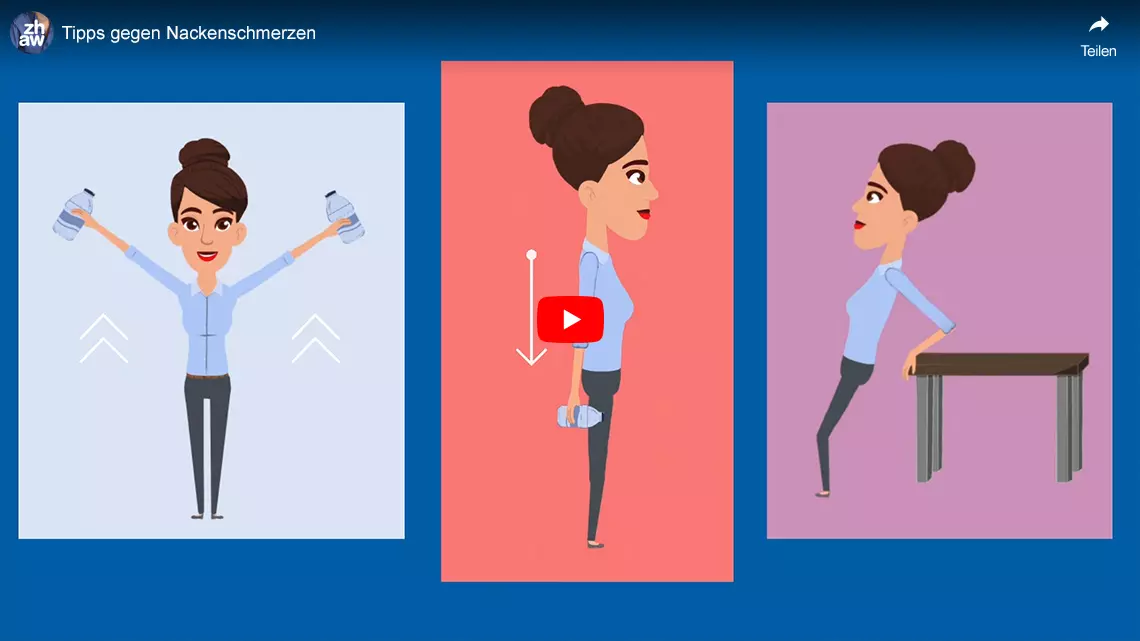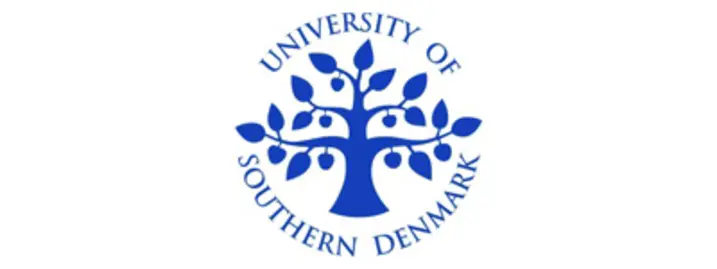Neck Pain in Office Workers
Prevention and Intervention of Neck Pain in Swiss Office Workers (NEXpro)

Problem and Idea
Neck pain is a common issue, especially among office workers. It can reduce physical well-being, affect overall quality of life, and decrease job satisfaction. Additionally, it often leads to reduced productivity, with employees leaving work early due to neck pain or having to redo tasks because they can’t concentrate. These costs are typically borne by the employer.
Currently, there is insufficient scientific knowledge about measures that can effectively prevent and reduce neck pain while simultaneously enhancing productivity. Recent studies have examined neck exercises, health-promotion information, and workplace adjustments following ergonomic guidelines. However, these measures seem to have only marginal effects on both neck pain and productivity.
Therefore, the idea behind the NEXpro project was to investigate the combination of these three measures – neck exercises, health-promotion information, and workplace ergonomics. It was hypothesized that combining these three measures, which individually have only a marginal effect, could achieve a significantly stronger effect.
Objective
The primary objective was to increase productivity and, consequently, reduce costs from the employer’s perspective. The secondary objective was to reduce neck pain and enhance the overall quality of life.
Method
The project was funded by the Swiss National Science Foundation. It commenced in May 2019 and was concluded in September 2023.
The study was conducted directly in the workplace within two organizations in the cantons of Zurich and Aargau during the years 2020 to 2021. All office workers received the combination of the three measures in a staggered manner. Health-promotion information was delivered through weekly workshops. Workplace adjustments, aligned with Swiss ergonomic guidelines (SUVA), were implemented. Neck exercises were performed three times a week for 20 minutes each session. The links to the video clips of the neck exercises are provided below.
Neck exercises: Film clips "Tips against neck pain"

Neck exercises: All film clips
- Instructions for standing exercises
- Bilateral scapular raise
- Bilateral shoulder extension
- Bilateral shoulder external rotation
- Bilateral shoulder shrugs
- Push-ups
- Bench dips
- Row
- Isometric neck flexion
- Isometric neck extension
- Isometric neck rotation
- Lateral neck stretch
- Stretch of neck extensor
- Stretch of the upper body
- Self-massage
- Bilateral shoulder circling
- Upper body rotation
Results
By combining the three measures, we were able to increase productivity by approximately 30 Swiss Francs per person per week. Furthermore, we were able to reduce the frequency of neck pain and its impact on disability. The intensity of neck pain remained unchanged.
Summary
- We reduced neck pain and improved work efficiency through a combination of neck exercises, health-promotion information, and workplace adjustments following ergonomic guidelines.
- Office workers experienced neck pain less often, and when it did occur, it had a lower impact on their daily lives.
- Because office workers were more productive, the employer had to spend less money on addressing neck pain.
Dissemination
Vitamin G: Bye-bye Nackenschmerzen! (in german)
For researchers: You can find further project information in our research database.
Project organization
- Project management
Prof. Dr. med. Markus Melloh
Prof. Dr. Achim Elfering - Project management
Prof. Dr. Hannu Luomajoki - Project duration
01.05.2019 - 30.09.2023 - Funding
Swiss National Science Foundation (SNSF) - Project status
completed - Contact
Prof. Dr. Frank Wieber
Markus Ernst
Prof. Dr. Hannu Luomajoki



